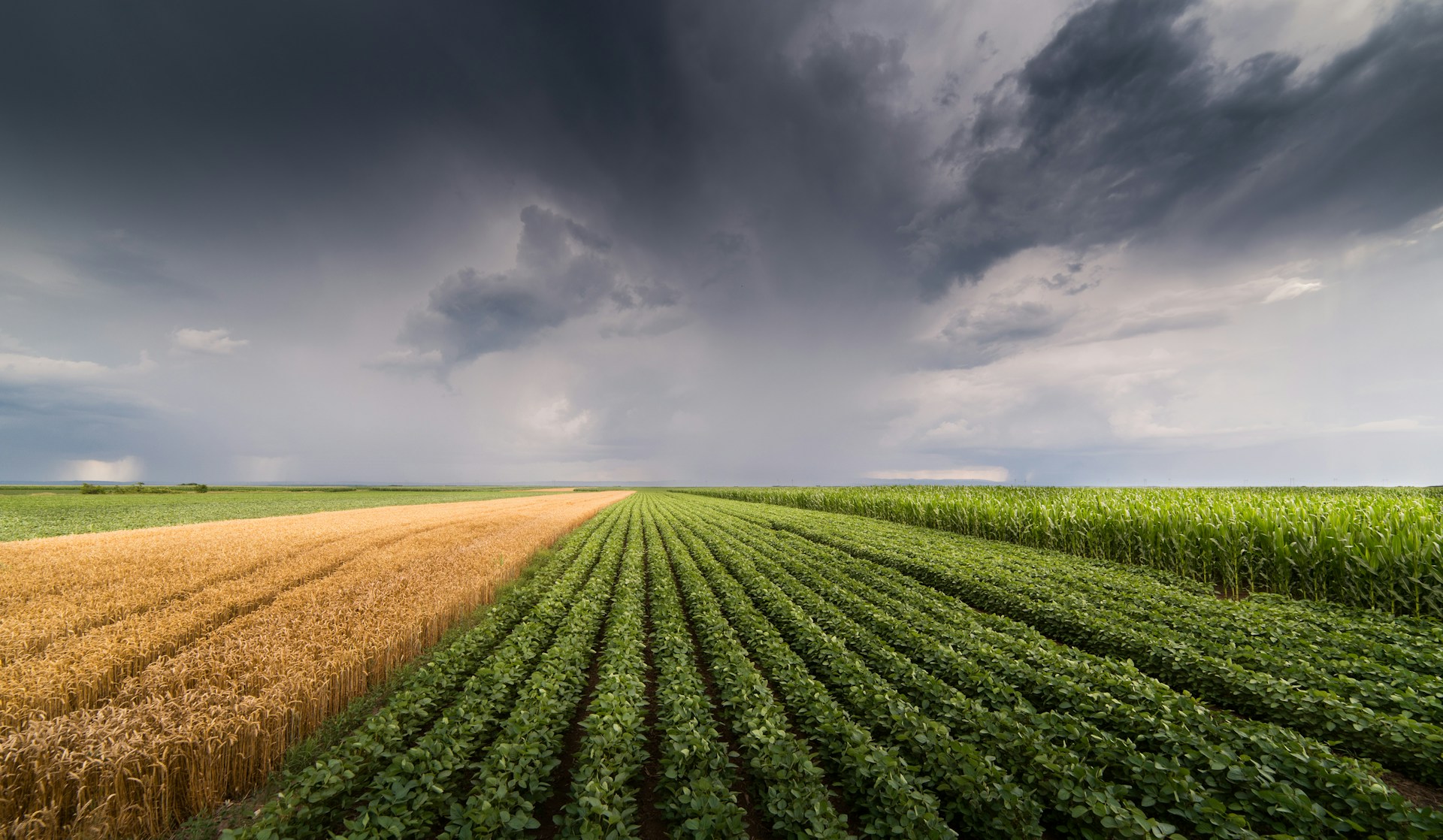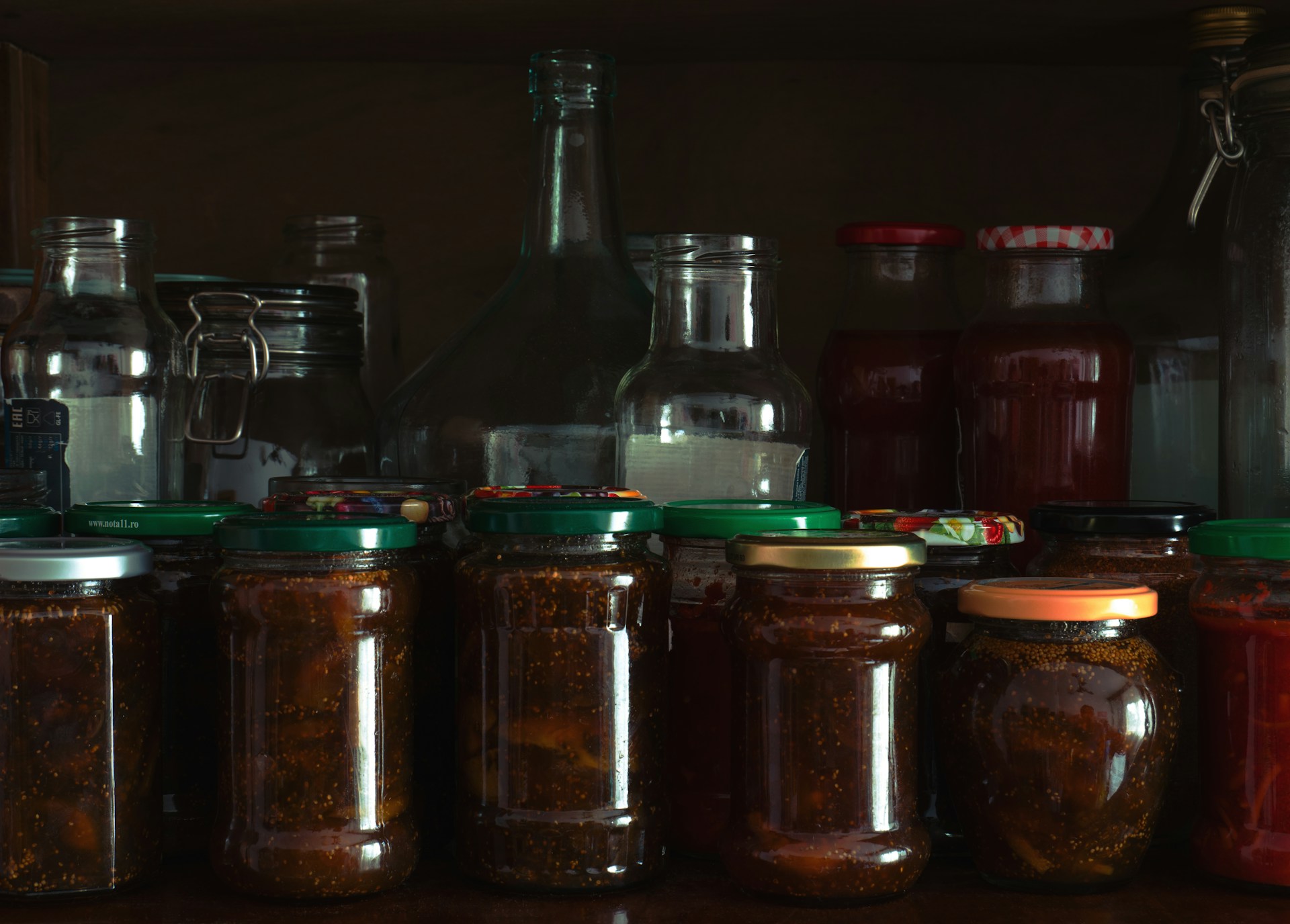Preparedness
Homeowner’s Bravery Turns Midnight Intrusion Deadly for Armed Invaders

In the quiet hours past midnight, a daring home invasion occurred in Hamilton County, Tennessee. A group of three armed intruders invaded a residential home. The homeowner, however, was not one to be easily frightened, opening fire on the intruders. This resulted in two of the invaders fleeing, while the third was fatally wounded.
Hamilton County Sheriff’s Office provided more details on the event. The officers reported attending to a home invasion call from the 6300 block of Shirley Pond Road around 1:25 a.m. last Tuesday. The home is situated in Harrison, a peaceful area half an hour northeast of Chattanooga, according to WTVC-TV.
The preliminary investigation by the sheriff’s office divulged that the homeowner had courageously confronted the three armed intruders. In the ensuing chaos, gunfire was exchanged between them.
” One of the suspects was struck during the exchange and died at the scene,” the sheriff’s office reported. The remaining two intruders made their escape by jumping through a window and fleeing the scene. Despite the immediate search by law enforcement in surrounding areas, the two suspects remain at large. The sheriff’s office is withholding the identities of those involved pending ongoing investigations.
The homeowner, whose identity is being kept anonymous for safety reasons, revealed to WTVC that this was the second consecutive night his home had been broken into. This shocking series of events has left the usually calm and safe neighborhood in a state of disbelief.
Residents expressed their surprise to WTVC, stating how unusual it was for such crimes to occur in their neighborhood, let alone twice in a row. The sheriff’s office investigators also agreed that this type of crime was a rarity in the area.
Public sentiment on the matter was crystal clear. “We the people must remain vigilant; [when there’s a] home invasion, shoot first and let ask questions later; remind the perps that this ain’t [California]; we’re armed and not scared to use ’em; WE ARE THE SOUTH!” one commenter said.
Another commenter on YouTube stated, “Good; perpetrators shouldn’t break into homes; it’s called divine intervention; get a job.” Another expressed thankfulness for the homeowner’s ability to defend his home and family, writing “I’m thankful the victim was able to defend family, home, and life.”
Watch a local news report about the incident below:
Let us know what you think, please share your thoughts in the comments below.

Preparedness
Shield Your Crops from Heavy Rains with These Tactics

As spring and summer approach, so do the heavy rains that can threaten the crops we depend on. These downpours can result in waterlogging, soil erosion, and plant diseases, making it crucial to employ strategies for safeguarding crops from such weather.
The key to ensuring crop survival and productivity lies in effective protection methods.
One of the most fundamental steps in crop protection is establishing a proper drainage system. Without it, even the most well-covered crops can suffer. “You can cover and protect your crops as much as you’d like, but if you don’t have adequate drainage, you may do a lot of work for nothing.”
A well-maintained drainage system ensures that water flows freely and helps prevent soil erosion. Simple measures, like digging canals or channels, can direct excess water away from your garden.
For those in regions prone to heavy rainfall, installing an underground drainage system can be beneficial. This setup helps remove excess water from the soil, preventing waterlogging and its detrimental effects on plant roots.
The condition of the soil is another critical aspect to consider. Waterlogged soil can reduce oxygen levels, leading to root rot and stunted growth. Preparing fields before planting to ensure proper drainage and aeration can make a significant difference.
Mulching is another effective method to combat heavy rains. By covering the soil, mulch reduces erosion and prevents rainwater from washing away valuable soil particles.
In addition to drainage and soil preparation, rain covers offer a direct way to shield crops from excessive water. These covers should be durable and tear-resistant to withstand both heavy rain and wind.
Row covers, made from materials like polypropylene or polyethylene, are lightweight and breathable. They allow water and air to pass through while keeping insects and pests at bay. Row covers are particularly useful for protecting delicate crops like lettuce and spinach.
Moreover, row covers can safeguard young seedlings from harsh weather conditions. They are easy to install and can be removed once the weather improves.
Tarps provide another layer of protection for gardens. Constructed from durable materials such as canvas or vinyl, tarps create a temporary shelter against rain and wind. To prevent them from blowing away during storms, it’s essential to anchor tarps securely with stakes or weights.
Plastic sheeting is a cost-effective solution for crop protection. It can serve as a temporary greenhouse or cover for garden beds. When using plastic sheeting, ensure it’s securely anchored and ventilated to prevent moisture buildup.
Be cautious not to use overly thick plastic, as it can trap heat, causing plants to overheat and dry out. Proper ventilation is key to maintaining a healthy environment for your crops.
By implementing these strategies, homesteaders can effectively protect their crops from the challenges posed by heavy rains, ensuring a bountiful harvest.
Let us know what you think, please share your thoughts in the comments below.
Preparedness
Master Your Digital Privacy with These Essential Security Tips

Navigating the digital landscape requires a blend of awareness and action to safeguard your privacy and security. Just as you wouldn’t welcome a stranger peering through your window, you shouldn’t allow digital intrusions into your personal data. Protecting yourself online involves understanding and addressing four key areas: local device security, the potential misuse of smart devices, cloud data management, and secure data transmission.
Your local devices, such as phones and computers, are treasure troves of personal data. It’s crucial to secure these devices against unauthorized access. Similarly, devices like smart doorbells and virtual assistants can be exploited if not properly managed. Your data stored in the cloud, like email accounts or financial information, is another critical area, as it resides on servers beyond your direct control. Lastly, the connections that transfer data between your devices and the internet are vulnerable to interception.
To enhance your online security, consider utilizing tools developed by organizations like the Electronic Frontier Foundation (EFF), which offers resources such as the Privacy Badger browser extension. Supporting these organizations through donations can help them continue their vital work.
A fundamental concept to grasp is that the cloud consists of computers you don’t own. When you sync a photo from your phone to services like Google Photos or iCloud, it exists both on your device and on the service provider’s servers. While the cloud is integral to modern conveniences, it’s important to use it wisely.
When it comes to communication, avoid using SMS, an outdated and insecure texting protocol. Instead, opt for encrypted messaging apps like Signal, which Edward Snowden recommends as the best in its class. Signal offers encrypted messaging, voice, and video calls, ensuring your conversations remain private.
Physical security measures, such as camera covers and microphone blockers, can protect against unwanted surveillance. Look for devices with physical kill switches that cut power to cameras and microphones, ensuring they can’t be activated without your consent.
For web browsing, choose privacy-focused browsers like Brave, which respect user privacy while offering familiar features. Many browsers now include privacy settings, such as “do not track” options, to enhance security.
Email services also play a crucial role in privacy. Unlike Gmail, services like Proton Mail prioritize user privacy and are less likely to cooperate with government surveillance. Proton Mail encrypts emails and is based in Switzerland, offering a higher level of protection.
A strong password strategy is essential. Use complex, unique passwords for each account to prevent hackers from exploiting your credentials across multiple platforms. Password managers can help you generate and store these passwords securely.
Virtual Private Networks (VPNs) offer another layer of security by encrypting your internet traffic and masking your online activities. However, choose a reputable VPN service that doesn’t log user data and is based in a privacy-friendly jurisdiction.
Two-factor authentication (2FA) adds an extra security layer by requiring a second verification step, such as a code sent to your phone. This makes it harder for unauthorized users to access your accounts, even if they have your password.
Finally, encrypting local files on your devices ensures that even if someone gains physical access, they can’t easily read your data. Many devices now include encryption features that operate seamlessly in the background.
In conclusion, staying secure online requires a proactive approach and a combination of tools and practices. By understanding how digital systems work and making informed decisions, you can better protect your personal information in an increasingly connected world.
Let us know what you think, please share your thoughts in the comments below.
Preparedness
Master Your Harvest: Essential Tips for Preserving Summer Bounty

When your summer garden is bursting with more produce than you can consume, it’s crucial to have a strategy to preserve your bounty. The simultaneous ripening of tomatoes, the accumulation of cucumbers, and the rapid bolting of herbs in the heat can lead to a surplus that, if not properly stored, will lose its flavor or eventually spoil. Without effective preservation, your hard-earned harvest becomes waste.
Preserving your summer harvest allows you to extend the enjoyment of your produce into the fall and winter months. This article explores three essential preservation methods: canning, freezing, and drying, each with straightforward steps and safety tips for beginners.
Summer is a season of abundance on the homestead, but this bounty is fleeting. Fresh produce is particularly susceptible to spoilage in hot or humid conditions. Without proper storage techniques, the fruits of your labor can quickly vanish.
Preservation not only reduces waste but also has several other benefits. It minimizes trips to the store during colder months, gives you control over the ingredients and quality of your food, and enhances food security using resources already available in your soil.
Each preservation method is best suited for different types of produce. Even if you’re new to these techniques, you can start with one and expand your skills over time. Canning provides pantry staples, freezing maintains flavor and texture, and drying requires minimal space while keeping herbs ready for use throughout the year.
Canning is an excellent way to store produce for a year or more. This method uses heat to create a vacuum seal in jars, preventing the growth of bacteria and mold. There are two safe canning methods: water bath canning for acidic foods and pressure canning for low-acid vegetables.
“Best for: jams, jellies, fruit preserves, pickles, tomatoes (with added acid).”
To begin canning, wash jars and lids, keeping jars warm until filled. After processing, remove jars and allow them to cool for 12 to 24 hours. For tested recipes and guidance, visit the National Center for Home Food Preservation.
Certain vegetables, like green beans, corn, and carrots, are too low in acid to be safely processed in a boiling water bath. Pressure canning uses higher heat to safely preserve these foods for long-term storage.
“Load jars into the canner and lock the lid. Bring to the correct pressure and start timing. Allow pressure to return to zero before opening.”
Freezing is a quick and flexible method for preserving most produce, maintaining food close to its original flavor and texture. However, many vegetables need blanching first to halt enzymes that cause spoilage.
“Blanch vegetables in boiling water for 1 to 4 minutes. Transfer to an ice bath. Drain and dry completely. Label with date and freeze flat to save space.”
Drying removes moisture to prevent spoilage and is particularly effective for herbs, sliced fruit, and thin vegetables like tomatoes or peppers.
“Dry at 125 to 135°F until brittle or leathery. Keep dried food in sealed containers away from light.”
Choosing the appropriate preservation method depends on the specific fruits and vegetables you have. Some require heat to stay safe, while others are best when frozen or dried. A quick reference chart can help match your produce with the best method, necessary tools, and typical shelf life.
Preserving your summer harvest requires patience and planning, but it rewards you every time you reach for a jar of home-canned sauce or a handful of dried herbs. These preserved foods offer more than just flavor; they embody value, effort, and security.
The habits you establish now will benefit you throughout the year. The more you store, the less you need from external sources, marking genuine progress on the homestead.
“What’s your favorite way to store your harvest? Drop your tips or go-to recipes in the comments below.”
Let us know what you think, please share your thoughts in the comments below.
-

 Tactical1 year ago
Tactical1 year ago70-Year-Old Fends Off Intruder with Lead-Powered Message
-

 Tactical1 year ago
Tactical1 year agoVape Shop Employee Confronts Armed Crooks, Sends Them Running
-

 Preparedness12 months ago
Preparedness12 months agoEx-Ballerina’s Guilty Verdict Sends Tremors Through Gun-Owner Community
-

 Preparedness10 months ago
Preparedness10 months agoGood Samaritan Saves Trooper in Harrowing Interstate Confrontation
-

 Tactical1 year ago
Tactical1 year agoMidnight SUV Theft Interrupted by Armed Homeowner’s Retaliation
-

 Survival Stories2 years ago
Survival Stories2 years agoEmily’s 30-Day Experience of Being Stranded on a Desert Island
-

 Preparedness10 months ago
Preparedness10 months agoArizona Engineer’s Headless Body Found in Desert: Friend Charged
-

 Preparedness10 months ago
Preparedness10 months agoBoy Saves Dad from Bear Attack with One Perfect Shot
Crotte
June 12, 2024 at 11:20 am
Permanent removal of the criminals solves the repeat offender problem!!!!!!
Pam Kesler
June 12, 2024 at 11:26 am
Have guns, train with them, use them.
Steve
June 12, 2024 at 12:14 pm
This would have had a completely different outcome if the homeowner hadn’t been armed.
A. B. Murphy
June 12, 2024 at 5:03 pm
In the south the second amendment is sacred. The problem with this story is that only one of the perpetrators was
reported hit by the homeowner. We don’t know if any of the others were hit or not — BUT we can hope. It is good
that the story was published. MAYBE, some of the possible future intruders will stop and think. However, it will
definitely be noted if there are reports of the homeowner owning firearms. The media won’t publish this type of
story with much encouragement in the face of the obvious facts.
Joe Forish
June 13, 2024 at 1:03 pm
He needs a little more training, 33% effectiveness is not acceptable.
Daffy
June 13, 2024 at 5:57 pm
SOB got what he deserved!
Bob
June 15, 2024 at 1:30 pm
THE USA SHOULD BE LIKE SWITZERLAND. EVERY CITIZEN SERVES IN THE MILITARY. UPON DISCHARGE THE ARE ISSUED A WEAPON.
HERE IN THE U.S. EVERYBODY SHOULD OWN A WEAPON FOR SELF DEFENCE.